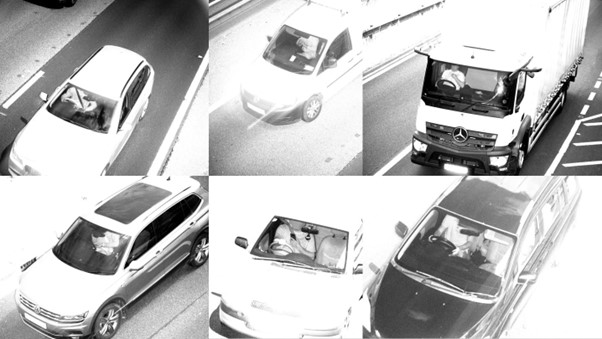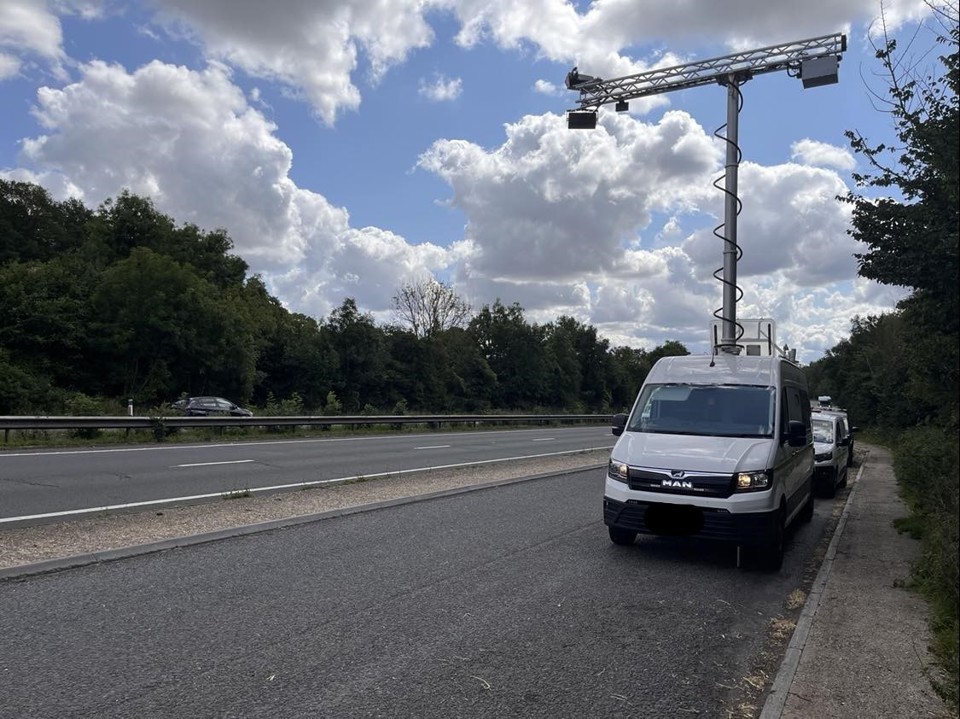New cameras aimed at catching drivers using their mobile phone behind the wheel are proving successful in police trials.
The technology, which can also detect whether drivers are wearing a seatbelt, was initially rolled out on selected routes across Devon and Cornwall from October, last year.
During the first couple of weeks, almost 600 people were caught by police not wearing seatbelts on Devon and Cornwall roads.
The cameras caught 590 people not wearing seatbelts and 40 people driving while using a mobile phone.
The Acusensus system is equipped with multiple cameras which record footage of passing motorists.
Images captured by the cameras are processed using artificial intelligence (AI) to determine if motorists were using a handheld mobile phone or if drivers and passengers were without a seat belt. It can also determine the speed a vehicle was travelling at the time.
Any images in which a potential offence is detected are then reviewed. If an offence has been correctly identified, the driver will either be sent a warning letter or a notice of intended prosecution, depending on the severity.
Twelve police regions have now trialled the Acusensus technology and three new trailer-based systems have arrived in the UK ahead of the next phase of trials.
Recent trials of the new trailer-based system, by Devon and Cornwall Police, caught almost 300 drivers breaking the law during the first three days of use.
The motorists were found to be using mobile phones or not wearing seatbelts.
Adrian Leisk, head of road safety for Devon and Cornwall Police, said: "When we trialled this technology last year, we were disappointed by the number of drivers detected not wearing seatbelts.
"The early results from our latest deployment show that there is also a problem with mobile phone use behind the wheel, which is both dangerous and illegal.
"We are employing this new technology to send a clear message to anyone who continues to use their phone behind the wheel - you will get caught."
The technology has also been deployed by Hampshire Constabulary and Thames Valley Police.
Partners, AECOM, operated the van-based system at locations across the two force areas, identifying hundreds of cases where these dangerous behaviours were taking place.

Geoff Collins, UK general manager for Acusensus, said: “The ‘heads up’ system is a perfect example for how AI technology can be used to improve road safety.
“Distracted drivers are a significant hazard for everyone, whilst those not wearing a seatbelt are far more likely to be killed in a collision – the Acusensus technology can help to change behaviours, reducing the casualty toll on our roads.”
The van is equipped with two cameras which capture suspected offences. One of them is set at a shallow angle to identify mobile phone use to the ear, and to see whether the seatbelt is going across the body or hanging down behind the driver.
The second camera has a steep view, providing visibility of mobile phone use low down, to detect behaviour such as texting near the steering wheel or door.
This second camera also gives further evidence of seatbelt use by being able to check the presence of the lap portion of the belt and confirm that it is clipped into the buckle.
The joint operations roads policing unit of Hampshire and Isle of Wight Constabulary and Thames Valley Police targeted commercial vehicles from July 17-21 as part of a National Police Chiefs Council campaign.
It led to almost 500 suspected driving offences being identified with the help of the AI-equipped camera van.





















Login to comment
Comments
No comments have been made yet.